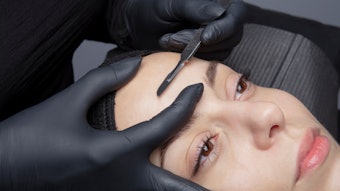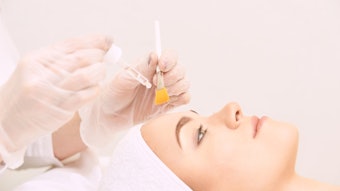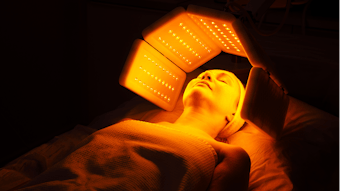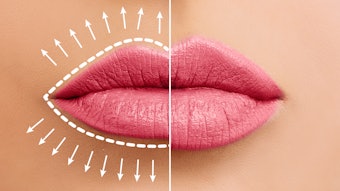
Offering pre- and post-operative treatments to spa clients has several benefits for everyone involved. No matter the venue in which an esthetician offers pre- and post-surgical services, it can help strengthen the bond between the esthetician and the client, and this can have the effect of creating trust between the client and an entire esthetic business.
The number of cosmetic medical procedures has increased dramatically during the past 10 years, as well as the number of people providing those procedures. Cultivating client relationships with more than one staff member increases the chance that clients will remain loyal to the business, helping to increase retention. And not only does building relationships keep clients coming back, but follow-up treatments also help to maximize the results of cosmetic surgical procedures.
For instance, manual lymphatic drainage massage treatments before and after a surgical procedure can reduce swelling and speed up the healing process. In fact, many cosmetic surgeons will hire an esthetician for the sole purpose of caring for the client before and after surgery.
It is also important to have an esthetician available to provide camouflage makeup techniques and educate the client on the importance of using the right products after the procedure. It’s time to capitalize on this relationship between esthetics and pre- and post-surgery care.
Physician relationships
There are many ways estheticians can work with aesthetic physicians. Typically, this partnership is most successful when the esthetician works in the physician’s office, because if there are any complications post-surgery, the physician is on-site. It is also beneficial to have the esthetician available at post-operative appointments so clients can get treatments immediately after checkups.
However, though an esthetician working in a medical setting is often seen as the best option, a physician-esthetician partnership can work through several avenues. Estheticians also can set up referral systems with local physicians. In this case, a physician would refer patients to the esthetician for pre- and post-operative treatments, and, in turn, the esthetician refers clients needing cosmetic medical treatments to that physician.
This can work, but it needs to be done correctly. The esthetician must take the initial steps to make this relationship happen, visiting local surgery offices to explain the benefits of offering pre- and post-operative treatments and developing the contacts necessary to build a quality referral network.
Once an esthetician finds the right fit with a physician, the business must be built, and the best way to do this is to meet every patient in the physician’s practice. Ask the receptionist to set up complimentary consultations with patients to discuss the pre- and post-operative services that will enhance the procedure the clients are receiving through the physician.
If the esthetician is providing services off-site, she can offer gift cards or vouchers for services such as a complimentary lymphatic drainage massage treatment that includes consultations to patients who sign up for surgery. This is a great way to build the relationship between both businesses.
Building client psyche
The surgical experience can be a very emotional time for clients. Those who choose to undergo elective procedures have often placed careful thought into their decision, and they may have expectations their lives will instantly change following the procedures, or that results will be immediate.
In actuality, instant gratification is rare. There is healing time associated with all surgical procedures and, although the practitioner informs the client of this, the client can be so excited that she concentrates more on the final outcome with little regard to the healing time involved.
The body needs time to heal itself, regardless of the procedure. Rhinoplasty is a good example of a procedure that may leave clients feeling distressed. Following the procedure, the client may be swollen to the point that the nose actually looks bigger than before the surgery, and although the physician and surgical coordinator educate the client on what to expect, she may still be disappointed the results aren’t immediate.
In some cases, clients may even experience swelling for up to a year. During this time, clients may be subject to a series of emotional ups and downs, and the esthetician can help build confidence throughout this process while also providing procedures to reduce swelling.
Clients need to feel that someone understands what they are going through, because they are often too nervous to tell the physician their true feelings. The esthetician can reassure the clients what they are feeling is normal and that post-surgical side effects will subside.
Lymphatic drainage massage
Manual lymphatic drainage is a great treatment to provide pre- and post-surgery. It is a treatment performed to improve the circulation of lymph through the body and stimulate the body’s immune response. Performing this treatment every other week—two times before the procedure and three times after the procedure—may help to reduce the amount of swelling and increase healing time following surgery.
Again, this also helps to create a relationship with the client while improving the overall healing process. This treatment should be practiced carefully, because if it is not performed correctly, it can cause additional swelling and actually prolong the healing process. Estheticians must have specialized training in lymphatic drainage techniques before performing them on clients.
The lymph system lies directly beneath skin, which is why manual lymphatic massage movements are very light. When doing manual lymph drainage, very light pressure—about the weight of a quarter—is applied to the client’s skin. If the pressure is too hard, the lymph system will not be affected. Using the hands in a soft, stretching manner, movements are applied in circular, pumplike or scooping strokes. It is important to remember this is not a typical massage of the skin and muscles. The pressure is just the opposite, and it should be applied in the direction of lymph flow, which is toward the client’s feet.
Another benefit of manual lymphatic drainage massage is that it was created to stimulate or act upon the parasympathetic nerves, or night nerves, which allow the body to rest and rejuvenate. It is during this process of rest that fluids circulate, and the immune system most effectively eliminates and filters toxins and pathogenic bacteria. The whole premise of this light-touch massage is to induce rest and relaxation to let the body’s own regenerative processes and immune system take hold.
Camouflage makeup
Applying camouflage makeup is an integral part of the skill set estheticians need when working in a surgical setting. The esthetician must have a thorough understanding of color and be able to develop precise application techniques in order to offer this service with quality, and while this takes practice, in the end, it pays off for both the estheticians and clients.
There are many procedures and surgeries that take place in the cosmetic medical office that leave the client with imperfections such as bruising during healing stages. Knowing how to camouflage these imperfections is important for your clients—they will appreciate the fact that someone took the time to help them look better during the healing stages of their medical treatments. This also can open the door to recommending other products and providing other skin care services, as well.
Mineral makeup is most frequently used in the medical setting due to its anti-inflammatory and protective qualities. Also, pure minerals do not support the growth of bacteria, which is why they are most often used post-operatively and for inflammatory conditions of the skin. As always, when estheticians are dealing with post-operative clients, sanitary practices and cleanliness are of primary concern to prevent any chance of infection. Before providing makeup applications, the esthetician must be sure all of the wounds have healed and the physician has given clearance for such treatments.
It is best to select the appropriate base and concealer makeup shades before surgery. This prevents being distracted by any discoloration caused by the procedure itself. The colors of a bruise often changes as it heals, typically starting out as a deep blue color that often ends in a yellowish tone.
For this reason, a palette containing multiple colors will be most beneficial to send home with the client. To camouflage specific colors, use the opposite color on the color wheel. For example, to camouflage discolorations that are blue, use an orange-based concealer; for red, use a green-based concealer; for yellow, use a pink or purple-based concealer; and for purple, use a yellow-based concealer. There is an easy way to keep track of these color combinations—just remember Chicago Bears (blue and orange), Christmas (red and green) and Easter (purple and yellow).
Product recommendations
Home care products need to be taken into consideration following cosmetic surgery procedures, too. Clients should not be using anything that can cause possible irritation to the skin, so products containing alpha or beta hydroxy acids, retinols or fragrance should be eliminated at least a week before surgery and for two weeks following. Clients should be using a mild cleanser that will not irritate the skin.
It is also vital the client wear a broad-spectrum sunscreen of at least SPF 30 to prevent the chance of incision areas becoming scarred or discolored. Zinc oxide is most often recommended, because it is a physical sunscreen and has anti-inflammatory properties.
Additionally, educate the client on how to care for her skin following the procedure, as well as on applying a healing ointment to areas that are prone to scarring. Teach the client how to cleanse the areas that have been worked on without causing undue irritation, taking the time to actually demonstrate cleansing and moisturizing techniques before she even goes through the procedure so the client is well-prepared.
The best results
The esthetician plays in an integral role during pre- and postoperative treatments, and these efforts can play a large factor in the client’s overall satisfaction with the procedure. Every little step a business can take to pay attention to detail will help the client have a great and comforting experience during what can be a stressful time. And always remember, everyone in this industry is working together to make clients feel better about themselves.










